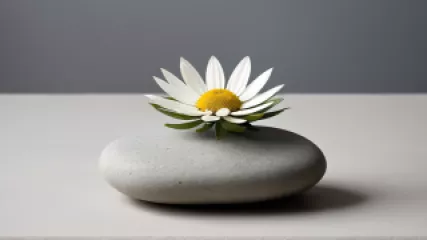Mastering Peer Competition: A Step-by-Step Guide to Self-Care
Mastering Peer Competition: A Step-by-Step Guide to Self-Care
In the dynamic, fast-paced world we live in, it's easy to get caught up in the competitive nature of our careers and personal pursuits. While a healthy level of competition can be a powerful motivator, it's crucial to understand how to manage peer competition in a way that promotes personal growth and well-being. In this comprehensive guide, we'll explore strategies and techniques to help you navigate the challenges of peer competition and cultivate a mindset of self-care.
Embracing a Healthy Mindset Towards Peer Competition
The first step in mastering peer competition is to examine your own mindset and beliefs about it. It's common for individuals to view peer competition through a lens of scarcity, believing that there is a limited pool of success, recognition, or resources to be shared. This scarcity mindset can lead to feelings of anxiety, resentment, and a constant need to "one-up" your peers.
However, by adopting a growth mindset, you can shift your perspective and see peer competition as an opportunity for personal and professional development. A growth mindset recognizes that success is not a finite resource, and that there are ample opportunities for everyone to thrive. This mindset fosters a spirit of collaboration, where you can learn from your peers, celebrate their achievements, and find ways to support one another's growth.
Cultivating Self-Awareness and Emotional Intelligence
Navigating peer competition requires a deep understanding of your own emotions, strengths, and weaknesses. Self-awareness is the foundation upon which you can build strategies to manage your reactions and responses to competitive situations. Take time to reflect on your personal triggers, the emotions that arise when you compare yourself to others, and the underlying beliefs or insecurities that may be driving those feelings.
Equally important is the development of emotional intelligence, which involves the ability to recognize, understand, and manage your own emotions, as well as those of others. Cultivating emotional intelligence enables you to approach peer competition with empathy, compassion, and a balanced perspective. It allows you to respond thoughtfully, rather than reactively, to the challenges and successes of your peers.
Establishing Healthy Boundaries and Self-Care Practices
Peer competition can be emotionally and mentally draining, and it's crucial to prioritize your own well-being. Establishing healthy boundaries is an essential component of self-care in the face of peer competition. This may involve setting limits on the time and energy you devote to monitoring the achievements of your peers, or consciously detaching from social media or other platforms that can fuel feelings of comparison and inadequacy.
Additionally, incorporating self-care practices into your daily routine can help you maintain a sense of balance and resilience. This may include activities such as meditation, exercise, journaling, or simply taking regular breaks to engage in activities that bring you joy and fulfillment. By prioritizing your own well-being, you'll be better equipped to approach peer competition with a clear mind and a strong sense of self-worth.
Cultivating a Supportive Network
Navigating peer competition can be a deeply personal and isolating experience, which is why it's essential to build a supportive network of individuals who can offer empathy, guidance, and encouragement. Seek out mentors, trusted friends, or colleagues who have navigated similar challenges and can provide a fresh perspective or practical advice. These relationships can serve as a safe space to process your thoughts and emotions, and can help you develop strategies for managing peer competition in a healthy way.
Additionally, consider joining or participating in professional or personal development communities that foster a spirit of collaboration and mutual support. These environments can provide valuable opportunities to learn from your peers, share your own experiences, and find ways to support one another's growth and success.
Reframing Failure and Setbacks
In the face of peer competition, it's natural to experience setbacks, failures, or moments of disappointment. However, it's crucial to reframe these experiences as opportunities for growth and learning, rather than as personal shortcomings. Adopt a mindset of resilience, where you view failures as stepping stones to future success, and embrace the lessons and insights they can provide.
When you experience a setback, take time to reflect on what you can learn from the experience, and how you can apply that knowledge to improve your approach moving forward. This mindset shift can help you maintain a sense of confidence and self-worth, even in the face of peer competition.
Celebrating Your Own Achievements and Successes
In the midst of navigating peer competition, it's easy to lose sight of your own accomplishments and progress. Make a conscious effort to celebrate your own achievements, no matter how small they may seem. This can involve creating a personal success journal, where you document your milestones and growth, or setting aside time to reflect on the progress you've made.
Additionally, consider sharing your successes with trusted friends, family members, or mentors. This not only allows you to honor your own achievements, but it can also help you build a stronger support network and foster a sense of self-confidence and pride.
Embracing Collaboration and Finding Mutual Benefit
While peer competition can often feel like a zero-sum game, where one person's success comes at the expense of another's, there are ample opportunities to find mutual benefit and cultivate a spirit of collaboration. Look for ways to leverage your unique strengths and skills to support your peers, or to collaborate on projects that can benefit everyone involved. This mindset shift can help you move away from a focus on "winning" and towards a more holistic, growth-oriented approach to peer competition.
Additionally, consider seeking out opportunities to learn from your peers, whether through mentorship programs, professional development workshops, or simply by engaging in open and honest conversations about the challenges and successes you're each experiencing. This exchange of knowledge and experience can benefit everyone involved and foster a sense of shared growth and accomplishment.
Maintaining a Balanced Perspective
Ultimately, navigating peer competition requires a delicate balance between self-care, personal growth, and a healthy acknowledgment of the achievements and successes of your peers. It's important to maintain a balanced perspective, where you can celebrate the wins of others without diminishing your own sense of self-worth or accomplishment.
Remember that peer competition is not a zero-sum game, and that there are ample opportunities for everyone to thrive. By cultivating a mindset of abundance, self-compassion, and mutual support, you can approach peer competition in a way that enriches your personal and professional development, and fosters a more fulfilling and meaningful journey.
Conclusion: Embracing Peer Competition as a Catalyst for Growth
In conclusion, mastering peer competition is not about "winning" or "beating" your peers, but rather about cultivating a mindset and set of strategies that allow you to navigate the challenges of peer competition in a way that promotes personal growth, well-being, and a sense of fulfillment. By embracing a growth mindset, cultivating self-awareness and emotional intelligence, establishing healthy boundaries and self-care practices, building a supportive network, reframing failures and setbacks, celebrating your own achievements, and finding opportunities for collaboration, you can transform peer competition from a source of anxiety and stress into a powerful catalyst for personal and professional development.
Remember, the true measure of success is not how you stack up against your peers, but how you continue to challenge, support, and uplift one another on the journey towards greater personal and collective growth. Embrace the journey, and trust that the path forward, though not always easy, will lead you to a deeper understanding of yourself, a stronger sense of self-worth, and a more fulfilling and meaningful life.






